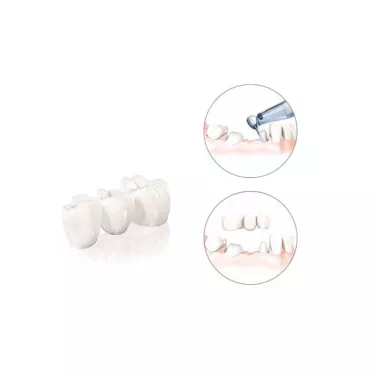
Giving you more than one reason to smile
There are various reasons that could lead to missing a tooth or set of teeth. There is a need for dental replacement in such cases. You could lose a tooth due to plaque, a build-up of bacteria that settles in the teeth. Inflammation of the gums too can be a cause for concern. Also, sometimes ill-fitting dentures can create discomfort.
Missing teeth can severely affect your life. Your general health, self-esteem and appearance can all be impacted. Dental Implantation can effectively replace missing teeth and restore oral health.
So, who can have a dental implant? A person with a fully developed jaw can receive a dental implant. Therefore, it is recommended to conduct the procedure in late teenagers or early adults if their jaw is fully developed. Your dental implant specialist will determine if you are the right candidate for the procedure and will chart the way forward.
Effect of missing teeth on jaws
Tooth loss disturbs the interplay between the teeth and bone. The gum and bone are no longer stimulated well enough due to the missing teeth, so the jaw bone starts shrinking and your gum begins to recede. Eventually, this weakens the neighbouring teeth until they collapse. Additionally, teeth in the opposite jaw can then start growing into the gap. It is therefore recommended to replace the missing tooth with a dental implant by Nobel Biocare. Not only is it aesthetically pleasing but also a widely recommended solution to avoid dental problems in the future.

Treatment roadmap
Diagnosis and treatment planning
First, your dentist will determine if you meet the prerequisites for a dental implant treatment. It is essential that your gums and jawbone are free from inflammation. During diagnosis, the dentist will also evaluate what type of jawbone you have and how much of it is left. Your dentist may opt to use digital tools to plan your treatment by generating a 3D image of your mouth. This will help the dental team during surgery, as it will provide the best angle and depth for your implant.


Placing the implant
Implant placement usually is an outpatient procedure, and, thanks to local anaesthesia, you will hardly feel anything. Depending on the individual situation in your mouth, implants are placed in a one or multiple-step procedure.
Final restoration
After surgery, your dentist will place a temporary crown, bridge or just a small plastic cap on top of your implant, while the implant integrates with the jaw bone. Depending on your individual situation, it can take from a few weeks to a few months. In the meantime, your dentist will work with a dental laboratory to design and manufacture your final restoration. Your customized crown, bridge or bar is then attached to the implant with a tiny screw or cement.


